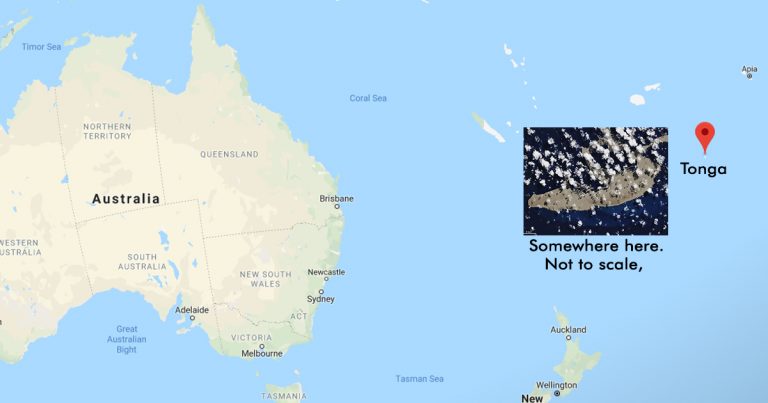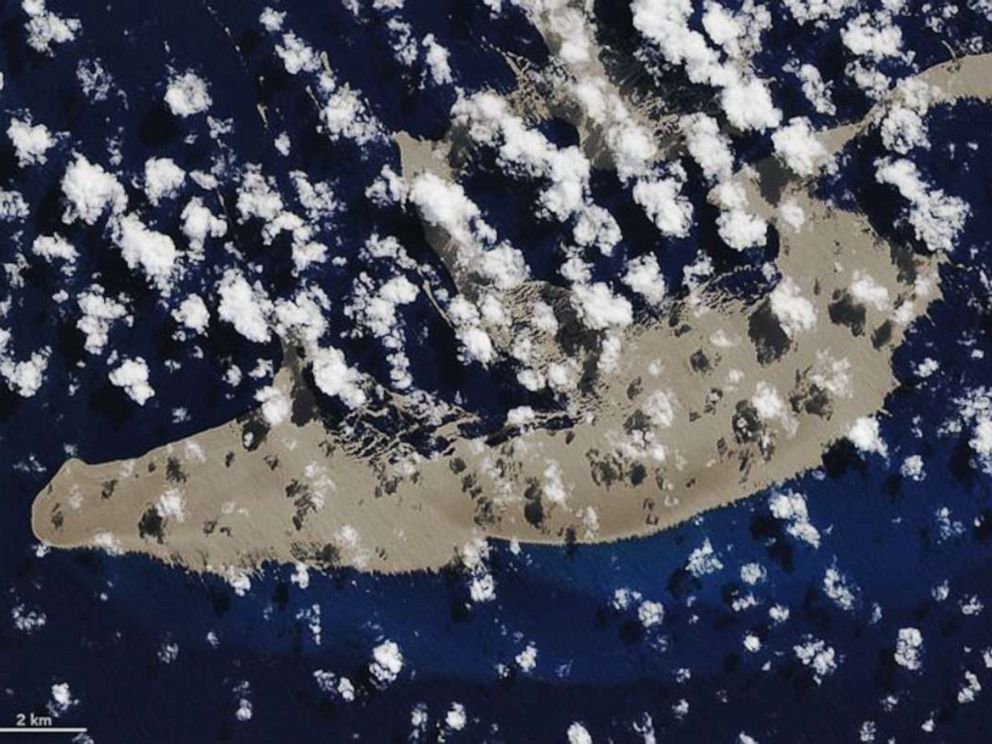
Somewhere around August 7, off the coast of Tonga, an underwater volcano erupted. The remains of it, a vast mass of volcanic rock is drifting through the Pacific Ocean, and is expected to reach Australia within 8 months. While the exact course of it is determined by a lot of factors, it is estimated to hit the Great Barrier Reef in Australia. According to Queensland University of Technology (QUT) in Australia, the floating sheet of pumice rocks, called a raft, is will bring with it billions of marine animals who attach themselves along the way”, a significant respite to the Great Barrier Reef, which according to scientists is dying.
The big raft, almost the size of a city is floating across the Pacific were first sighted by Australian couple Michael Hoult and Larissa Brill after coming across the rubble at night while sailing a catamaran to Fiji
The couple were temporarily stuck after rocks jammed their boat’s rudder, but were later able to navigate a way out of the block.
Following their encounter, the couple sent samples of the pumice stone to researchers at the QUT.
In a statement, Scott Bryan, one of the geologists studying the samples provided, said the raft was going to “bring new healthy corals and other reef dwellers to the Great Barrier Reef”.
“When it gets here, [the pumice raft will be] covered in a whole range of organisms of algae and barnacles and corals and crabs and snails and worms,” he told ABC.

While a significant respite to the Great Barrier Reef – which according to climate scientists is dying at an accelerated rate owing to rising ocean water temperatures, a ‘raft is not going to save the reef’. According to scientists, ‘the raft of pumice just doesn’t transport enough marine life to make a difference.’
According to scientists, coral reefs are dying because of change in water temperature – wherein microscopic algae living inside the coral’s tissue, who are extremely sensitive to their surrounding water temperature are leaving the coral, leaving behind only the skeleton. The process is called a ‘bleaching event’ and needs to be stopped to prevent the coral from dying.
Nevertheless, while the globe continues to argue if the globe is warming or not, an isolated incident thousands of kilometres away could bring new life to the coral reefs is a fascinating phenomenon – a move well played by nature.




